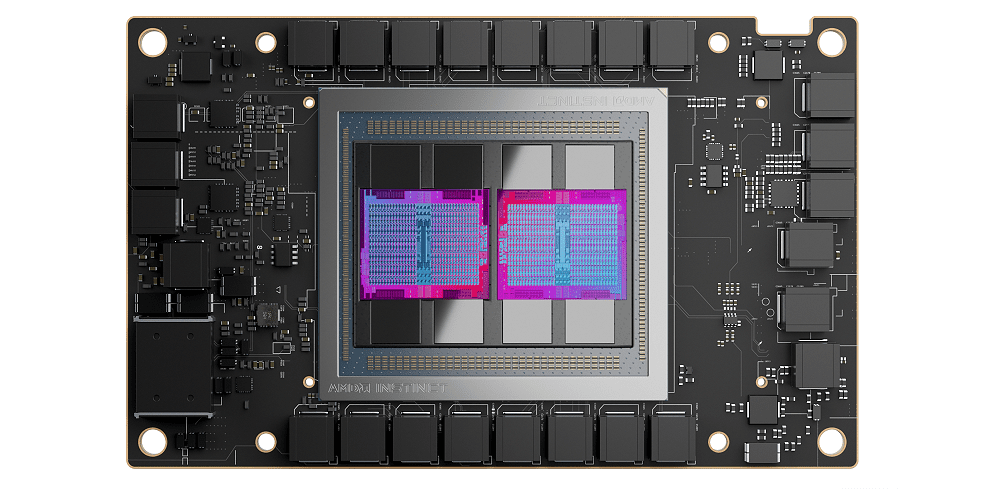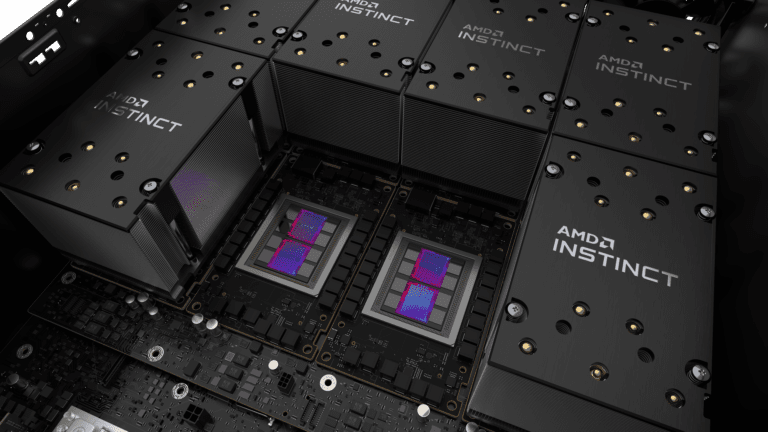AMD introduces Instinct MI200, a two-headed series of GPU accelerators for supercomputers and data centers. The Instinct MI250X, the most powerful model in the series, will be incorporated into the Frontier: a supercomputer set to deliver the world’s fastest computational speed by the end of 2021.
A supercomputer’s value is defined by computational speed. Among other things, predicting the weather, climate and personalizing health care relies on the ability to perform an enormous amount of calculations per second. When discussing supercomputers, gigantic amounts are expressed in floating point operations per second, or FLOPS. The most powerful supercomputers today, so-called exascale supercomputers, compute at a rate of 1018 FLOPS. To simplify the expression, scientists shorten the number to a term: exaFLOPS, where exa refers to the aforementioned exascale.
Why AMD’s introduction is attracting attention
ExaFLOPS speeds have only been achieved twice. First, by the Folding@Home project in March 2020; then, by ‘Fugaku’ in June 2020, a supercomputer with components from Fujitsu. In both cases, speeds were achieved with a precise combination of types of processors: Central Processing Units (CPU) and Graphical Processing Units (GPU). Modern supercomputers do not consist of one or the other, but are a combination of CPUs and GPUs.
With the MI200 series, AMD introduces two GPUs: the Instinct MI250X and Instinct MI250. Never before has the manufacturer launched processors focused on exascale supercomputers. As mentioned earlier, in practice, such GPUs work together with CPUs. Hence, AMD describes the processors as GPU accelerators. We’re essentially talking about GPUs, but because GPUs are focused on speeding up the entire composition of a supercomputer – and thus computational calculations – AMD adds accelerator to the name.
How the models enter the world
The Instinct MI250X, a more powerful alternative to the MI250, is being incorporated into supercomputer ‘Frontier’ at the time of writing. The U.S. government, HPE, Oak Ridge National Laboratory and AMD designed the supercomputer to exceed a speed of 1.5 exaFLOPS — breaking the record of the aforementioned ‘Fugaku’ (1.42 exaFLOPS). Despite being a noteworthy strive, the latter is not a primary goal, as asserted by Thomas Zacharia, director at Oak Ridge National Laboratory. “Frontier will push the boundaries of scientific research by increasing the capability for large-scale AI, analytics and simulation applications.”
According to the developers, ‘Frontier’ will be fully functional by the end of 2021. Well before then, the MI250 and MI250X appear in the field. Both models are available immediately in the form of open-hardware compute accelerator and OCP Accelerator Module (OAM), two different standards that allow the GPUs to be integrated into existing supercomputers and data centers. Finally, the AMD MI250X is made available by HPE as part of the HPE Cray EX, a portfolio of pre-built supercomputers.

